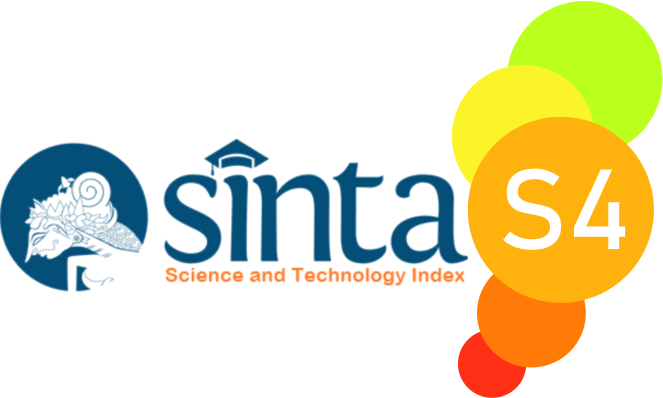Examining the Motivation to Read and Its Relationship to Second Language Reading Proficiency in an Indonesian EFL Tertiary Context
Abstract
The purpose of this research is to investigate and describe the intrinsic and extrinsic motivations of tertiary-level EFL students in Indonesia toward reading English. The quantitative method was applied by asking students majoring in English at Brawijaya University to fill out a questionnaire adapted from Wigfield and Guthrie's Motivation for Reading Questionnaire (MRQ) (1997). The questionnaire was administered to students from 2018 generations to 2020 generations. Besides that, students’ self-assessment reading value used to measure students’ reading proficiency. In addition, this study also examined the correlation between students' reading motivation and their reading ability. The data collected were analyzed using the SPSS program with descriptive statistics to answer research question 1 and Pearson correlation analysis to answer research question 2. The results indicated that students are relative highly extrinsic motivated in reading English. Meanwhile, intrinsic motivation was found to have a significant correlation and extrinsic motivation was found to have a negative correlation with students' reading. Based on these findings, lecturers are expected to increase students' intrinsic motivation to read.
References
Dakhi, S., & Damanik, I. S. (2018). Students’ Motivation in Reading English Text: A Qualitative Study in EFL Context. JET (Journal of English Teaching). https://doi.org/10.33541/jet.v4i2.832
Dhanapala, K. V., & Hirakawa, Y. (2016). L2 Reading Motivation Among Sri Lankan University Students. Reading Psychology. https://doi.org/10.1080/02702711.2015.1025163
Guthrie, J. T., Wigfield, A., Humenick, N. M., Perencevich, K. C., Taboada, A., & Barbosa, P. (2006). Influences of stimulating tasks on reading motivation and comprehension. Journal of Educational Research. https://doi.org/10.3200/JOER.99.4.232-246
Huang, S., Orellana, P., & Capps, M. (2016). U.S. and Chilean College Students’ Reading Practices: A Cross-Cultural Perspective. Reading Research Quarterly. https://doi.org/10.1002/rrq.144
Kambara, H. (2021). Exploring Japanese Fourth Graders’ Motivation to Read: A Mixed-Method Study. Literacy Research and Instruction. https://doi.org/10.1080/19388071.2020.1806416
Komiyama, R. (2013). Factors underlying second language reading motivation of adult EAP students. Reading in a Foreign Language.
Meniado, J. C. (2016). Metacognitive Reading Strategies, Motivation, and Reading Comprehension Performance of Saudi EFL Students. English Language Teaching, 9(3), 117. https://doi.org/10.5539/elt.v9n3p117
Muslim, A. B., Hamied, F. A., & Sukyadi, D. (2020). Integrative and instrumental but low investment: The English learning motivation of Indonesian senior high school students. Indonesian Journal of Applied Linguistics. https://doi.org/10.17509/ijal.v9i3.23199
Ryan, R. M., & Deci, E. L. (2000). Intrinsic and Extrinsic Motivations: Classic Definitions and New Directions. Contemporary Educational Psychology. https://doi.org/10.1006/ceps.1999.1020
Sahiruddin, S., & Jannah, M. (2020). Jurnal Studi Budaya Nusantara. Jurnal Studi Budaya Nusantara, 4(2), 118–132.
Salikin, H., Bin-Tahir, S. Z., Kusumaningputri, R., & Yuliandari, D. P. (2017). The Indonesian EFL Learners’ Motivation in Reading. English Language Teaching, 10(5), 81. https://doi.org/10.5539/elt.v10n5p81
Wang, J. H.-Y., & Guthrie, J. T. (2004). Modeling the effects of intrinsic motivation, extrinsic motivation, amount of reading, and past reading achievement on text comprehension between U.S. and Chinese students. Reading Research Quarterly. https://doi.org/10.1598/rrq.39.2.2
Wigfield, A., & Guthrie, J. T. (1997). Relations of Children’s Motivation for Reading to the Amount and Breadth of Their Reading. Journal of Educational Psychology. https://doi.org/10.1037/0022-0663.89.3.420
Yustitiasari, H., Junining, E. & S. (2020). e-Journal of Linguistics. The Relationship between Language Learning Strategies Used Vocational Students and Level of Proficiency, 14(1), 128–136.
Copyright (c) 2022 Miftahul Jannah, Sahiruddin Sahiruddin, Roosi Rusmawati

This work is licensed under a Creative Commons Attribution-ShareAlike 4.0 International License.

Journey: Journal of English Language and Pedagogy by http://ejurnal.budiutomomalang.ac.id/index.php/journey/index is licensed under a Creative Commons Attribution-ShareAlike 4.0 International License.






